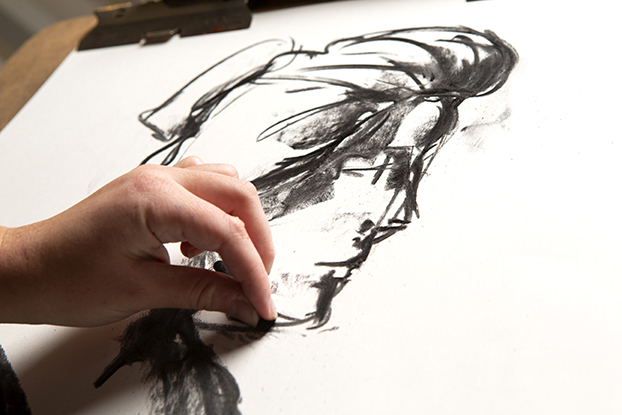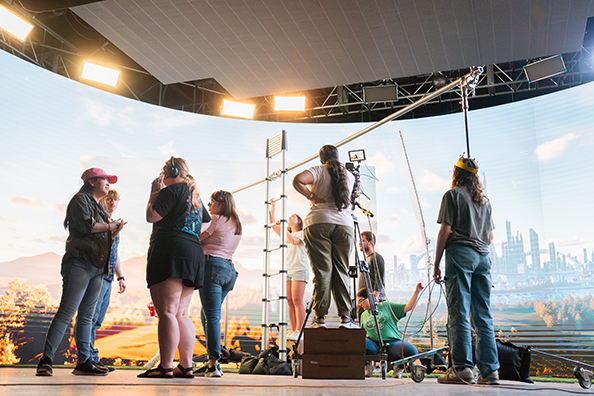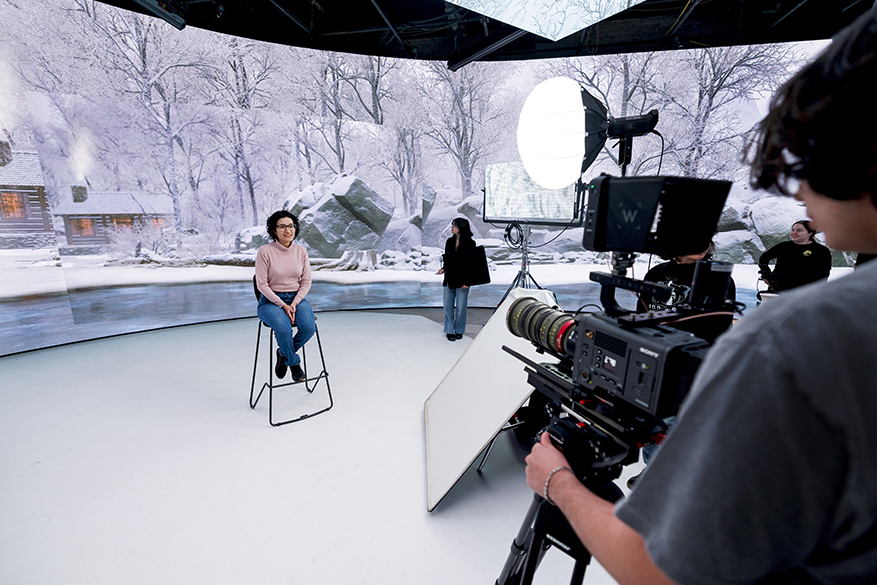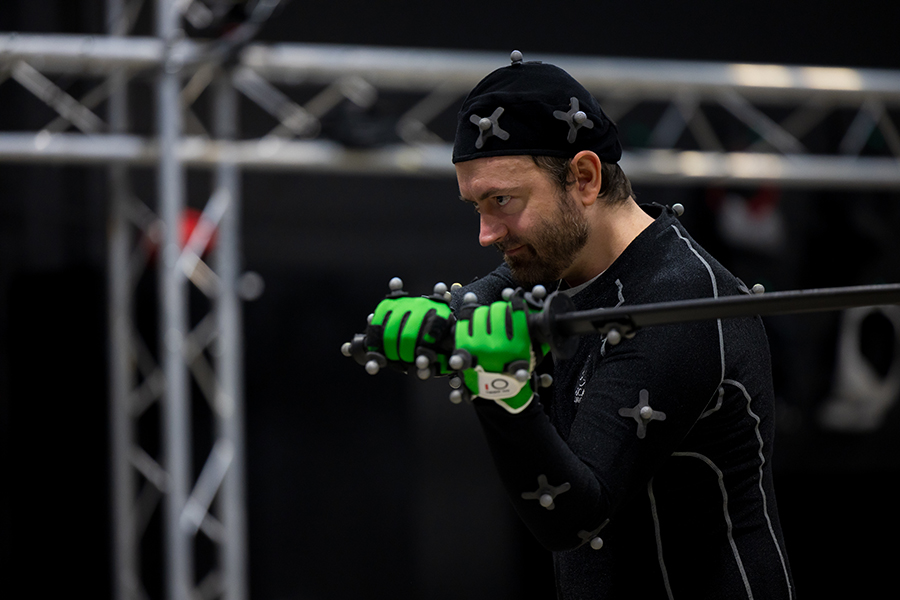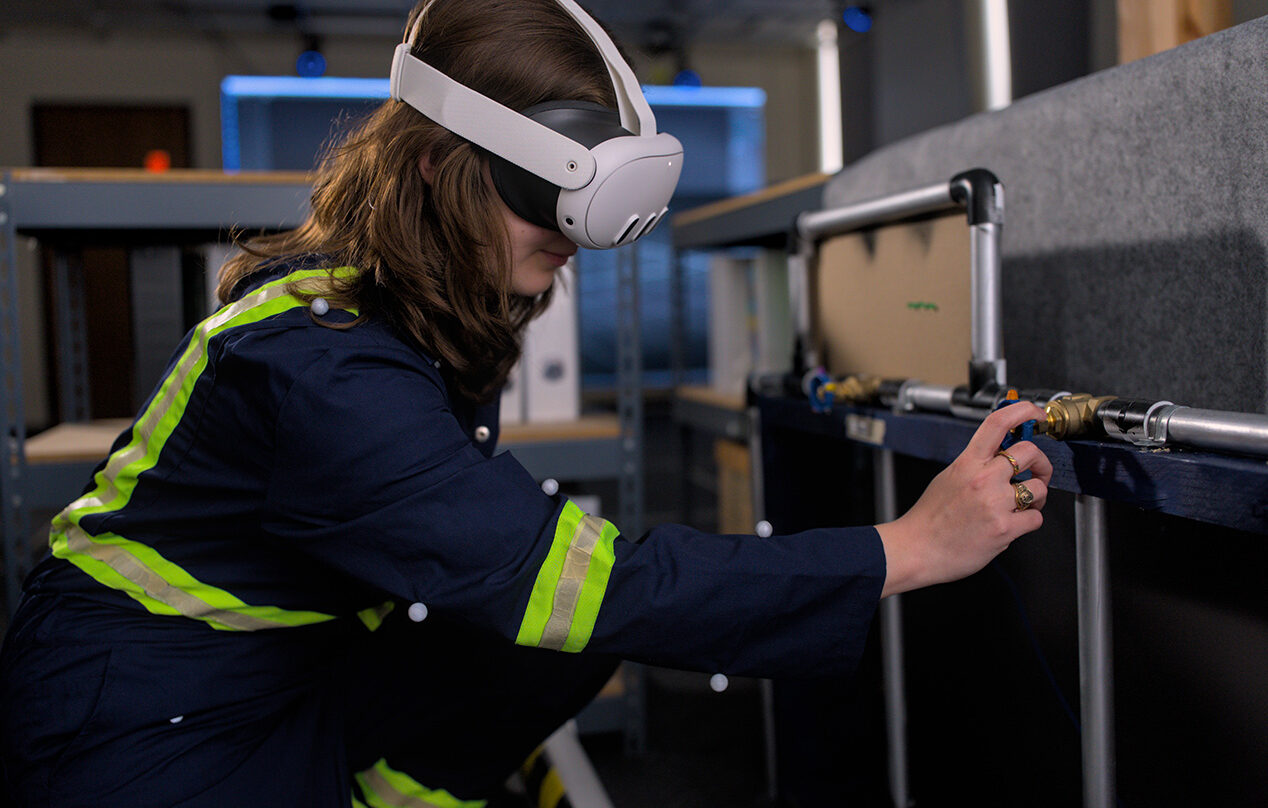Visualization Program
Our program produces leaders in fields where art and science merge. Marked for its experimental and precise approach to design, our curriculum produces technical artists through cross-disciplinary coursework.

Create With Us
The advent of high technology information, imaging, and media systems has fostered a modern renaissance in visualization. Today’s visualizers need skills spanning computer science, video technology, psychology and more. Our graduates are prepared for a range of careers, including in visual development; production management; asset development; technical artistry; UI/UX development; game design; game level design and game asset development.
Undergraduate Degrees
The B.S. in Visualization integrates technical prowess with visual artistry. Students become technical artists through studio-based classes that integrate fine arts, three-dimensional design and digital technology. Focus areas include animation/visual effects; game design and development; and interactive design.
AI in the Arts
Designed to meet the growing demand for integrating artificial intelligence in artistic practice, this minor equips students with the skills to incorporate AI into visual arts, dance, theatre, interactive media and music. The program provides a comprehensive education on the use of AI tools, emphasizing critical decision-making, ethical considerations and social implications.
Game Design and Development
We offer the opportunity to develop knowledge and skill associated with the aesthetic and technical aspects of interactive media. The curriculum includes art, design, programming, media literacy and video game production. Students learn core competencies as well as engage in creative problem-solving, with a foundation in the principles of game design and software development.
Graphic Design
Students interested in graphic design as a career or looking to complement a major area of study can benefit from this minor, which provides a foundation of layout, typography and color, along with relevant software skills and the language of graphic design. Electives include digital photography, color theory and web design.
Studio Art
Traditional art and digital courses help to broaden students’ skill sets in analog and digital tools. Courses provide an understanding of tools and processes which can then be specialized through electives including painting, sculpting and time-based media.
Virtual Production
Virtual production has become common in entertainment media production, and its use is expanding into areas including architectural/engineering visualization, manufacturing, product design, simulation and training, and live performances. The curriculum includes virtual production techniques, storyboarding, visual computing, lighting and cinematography.
Graduate Degrees
The M.F.A. in Visualization integrates creativity, technical discipline and visual artistry into one unique degree. This program hones students’ visual communication skills as they create a body of work.
The M.S. in Visualization develops the creative, scientific, cognitive and technical foundations of visual artistry. The program prepares students for careers as industry professionals and innovative leaders in design.
The Ph.D. program in Visual Computing and Interactive Media is a multidisciplinary initiative designed to facilitate advanced study in both theoretical and practical dimensions, addressing complex computational challenges in various forms of visual communication.
Preparing for the Visualization Program
High school students can take art, design, and coding courses to prepare for the visualization program. These courses are not required, but help prepare students for our program. Students wishing to transfer into our program should work on developing their portfolio. While first-time-in-college freshmen do not need a portfolio to apply, transfer students do.
FAQs
Yes. The Visualization program combines artistic skills with technological prowess. Having an artistic background and an understanding of new or traditional arts will help you be successful in this major.
Comfort with technology is important. Skills in coding, 3D applications and/or 2D applications are helpful.
We have a maker space, print lab, open access computer lab and cintiques.
Yes. The Visualization program requires that all incoming students (freshmen, change of majors and transfer students) have a serviceable laptop computer and suggests a minimum system configuration. A PC is preferred at this time for animation and gaming areas of interest.
For more information about the Visualization program, please contact Jill Raupe, academic advisor, at jill-d-raupe@tamu.edu.




